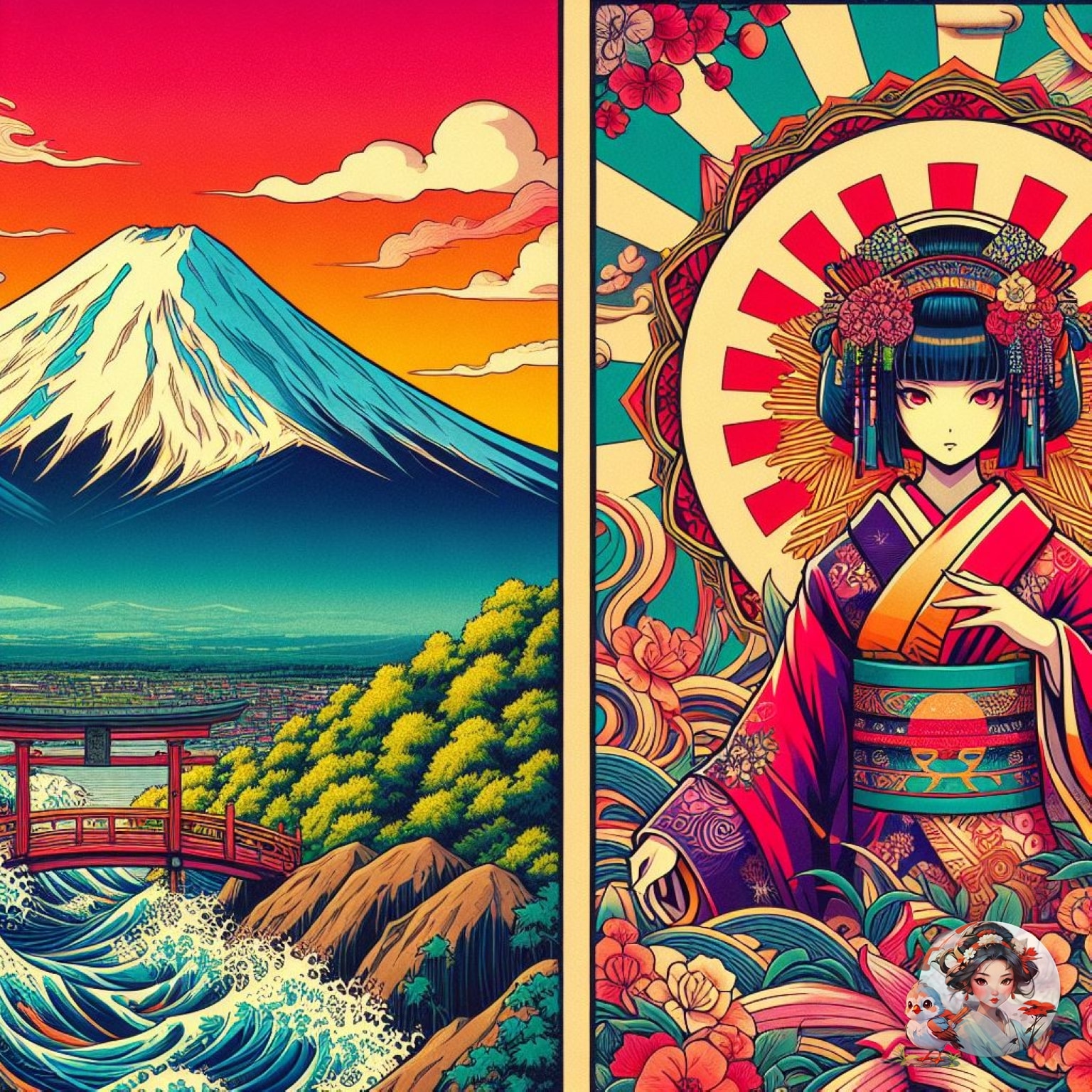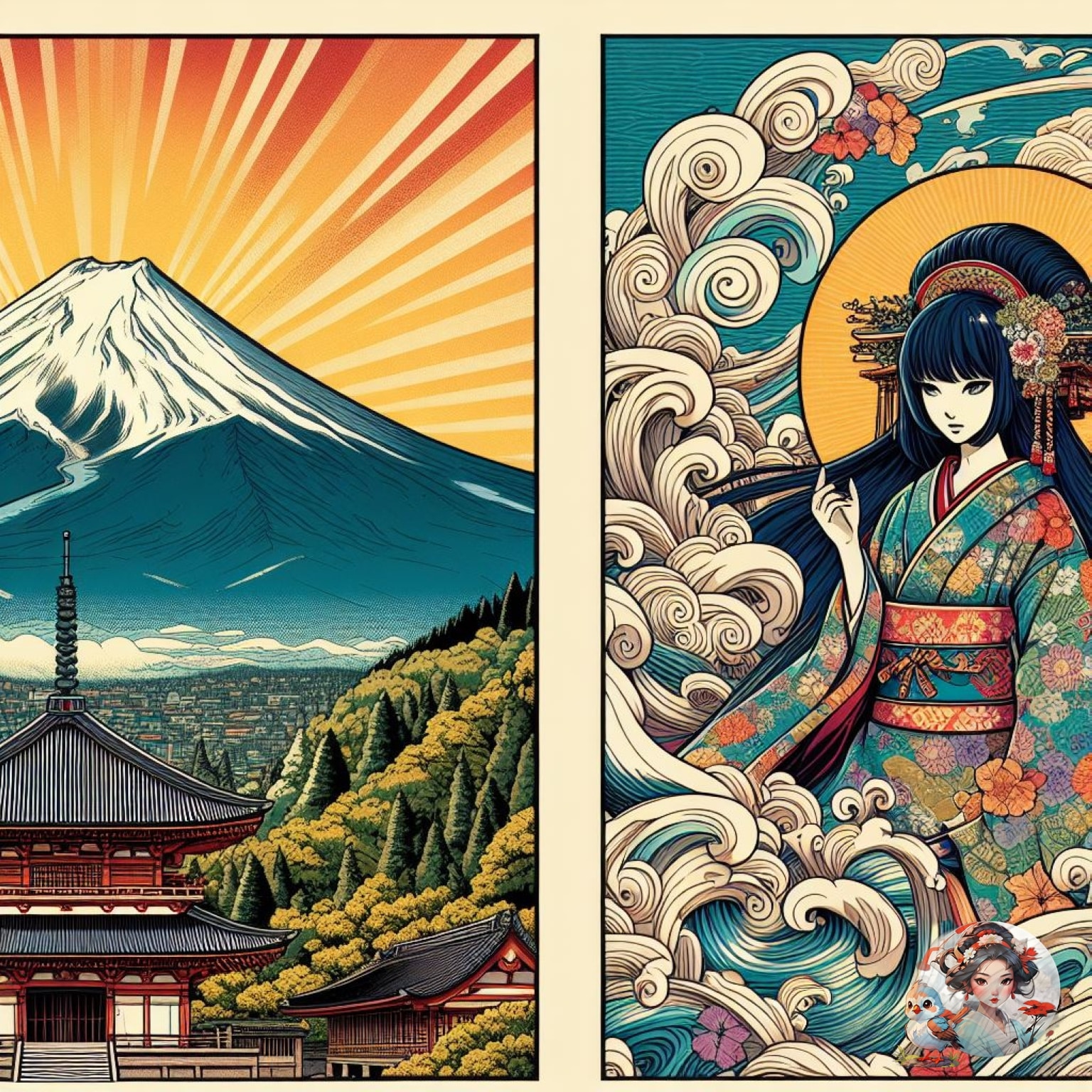The history of Japanese art is a complex blend of tradition, creativity, and cultural significance. From the early Jomon pottery to the famous ukiyo-e prints of the Edo period, Japanese art has constantly evolved, reflecting changes in society, politics, and artistic expression.
The delicate techniques of sumi-e painting, the captivating performances of Noh theater, and the serene beauty of Ikebana and Shodo all carry the rich heritage of Japanese art, while modern interpretations breathe new life into this timeless tradition. As we delve into the world of Japanese art, we are able to witness its enduring legacy and dynamic evolution that continues to captivate and inspire people globally.
Table of Contents
ToggleThe evolution of Japanese art over thousands of years reflects the rich interplay of culture, tradition, and artistic expression. Buddhism had a profound impact on Japanese art, influencing its themes and techniques. Embracing simplicity, balance, and harmony, Japanese art emphasizes the use of negative space to invite contemplation and introspection.

From tranquil ink paintings of landscapes to vibrant ukiyo-e prints, Japanese art has continually evolved while honoring tradition and heritage. This journey showcases the captivating fusion of old and new influences, shaping the vibrant tapestry of Japanese artistic expression.
Traditional Japanese art techniques are known for their focus on natural materials and the use of negative space. This reflects a timeless dedication to balance, harmony, and artistic expression. Zen Buddhism has had a profound influence on these techniques, emphasizing simplicity, mindfulness, and the beauty of imperfection. Ukiyo-e and sumi-e are traditional techniques that have adapted to modern methods while retaining their essence. For example, ukiyo-e, which was originally created through intricate woodblock printing, now incorporates digital tools for design and reproduction.
Similarly, sumi-e artists have begun to explore digital platforms for their minimalist ink paintings. Despite these modern adaptations, the core principles of these traditional techniques continue to honor the Zen ideals of presence and intention. The combination of traditional and modern techniques in Japanese art reflects a dynamic evolution, where the timeless wisdom of the past continues to inspire contemporary creativity.
The ukiyo-e art form thrived during the Edo period in Japan, capturing vibrant scenes of daily life, landscapes, and popular culture with intricate detail and lively colors. Ukiyo-e, which translates to ‘pictures of the floating world,’ used Japanese woodblock prints to create stunning visual representations. These prints became widely available and affordable, leaving a lasting impact on Western art and inspiring renowned artists like Vincent van Gogh and Claude Monet.

The influence of ukiyo-e on Western art can be seen in the use of bold lines, flat color planes, and unconventional perspectives. Notable ukiyo-e artists such as Katsushika Hokusai and Utagawa Hiroshige contributed to the genre’s popularity and enduring legacy. The meticulous process of designing, carving, and printing ukiyo-e prints showcases the unparalleled skill and artistry of Japanese printmakers during this period.
Sumi-e is a traditional style of Japanese ink painting that dates back centuries. It focuses on simplicity and elegance by using minimalistic techniques to portray landscapes and nature. Sumi-e artists skillfully capture the beauty of the natural world through expressive brushstrokes and the use of negative space, creating a sense of tranquility and harmony within the artwork. This style often incorporates symbolism to convey deeper meanings, inspiring contemporary artists and remaining a cherished cultural tradition in modern Japan.

Noh theater, which originated in the 14th century, is an integral part of Japan’s performing arts scene. It combines music, dance, and drama to explore profound themes related to the human experience and the supernatural. Noh’s enduring allure stems from its stylized movements, elaborate costumes, and masks, captivating audiences with its timeless elegance and emotional depth.
Ikebana, Shodo, and contemporary Japanese art showcase the rich artistic heritage of Japan. Ikebana, the art of Japanese flower arrangement, emphasizes simplicity and asymmetry, reflecting Japanese aesthetics. Shodo, the elegant art of calligraphy, uses brush and ink to convey the artist’s spirit through carefully executed brushstrokes. Both Ikebana and Shodo depict traditional Japanese art, highlighting the country’s cultural richness. In the realm of contemporary art, Japan’s fusion of tradition and innovation is evident in various forms such as manga, anime, street art, installation art, and fashion.
This fusion captures modern Japanese culture, blending centuries-old traditions with avant-garde creativity, illustrating Japan’s artistic evolution.